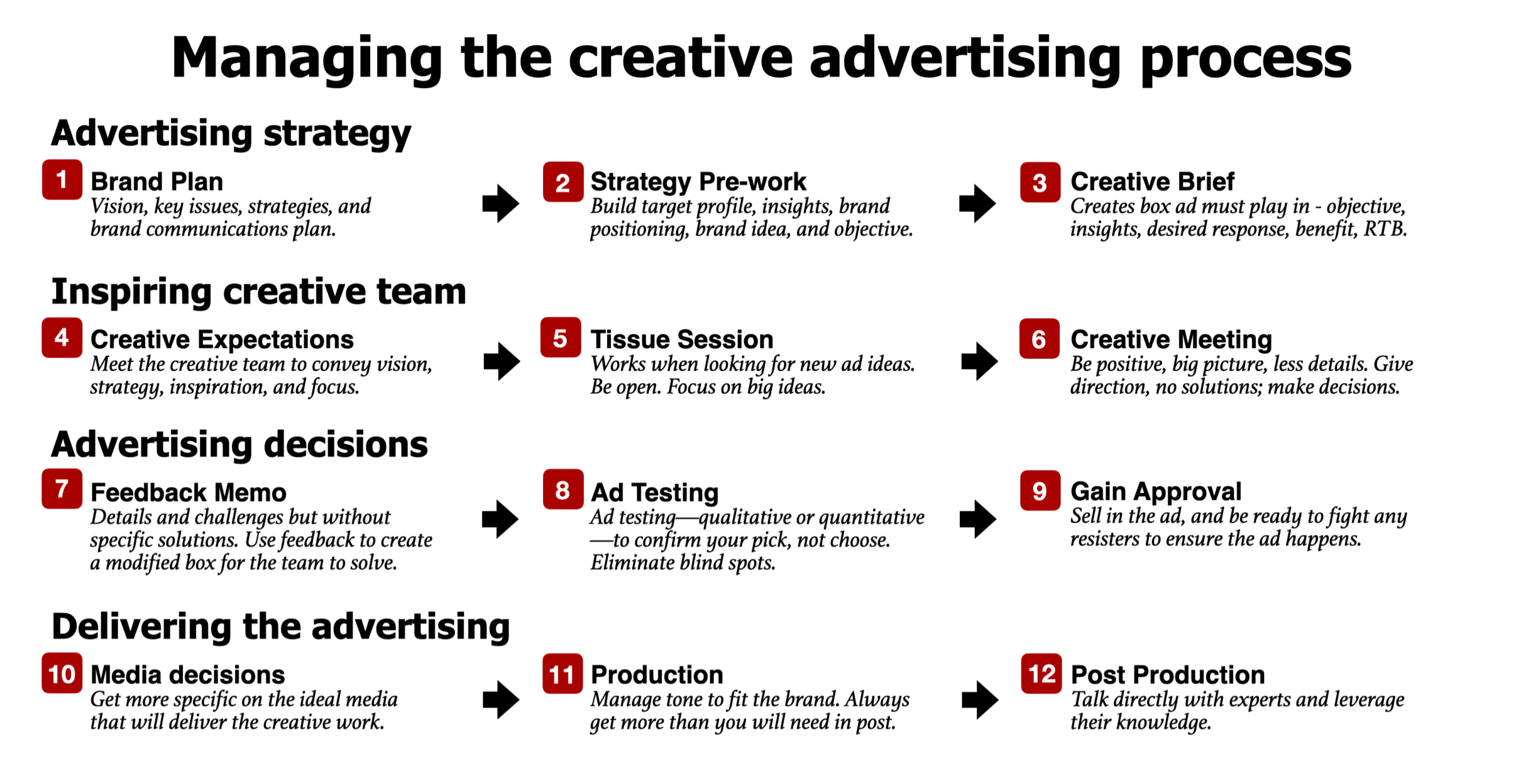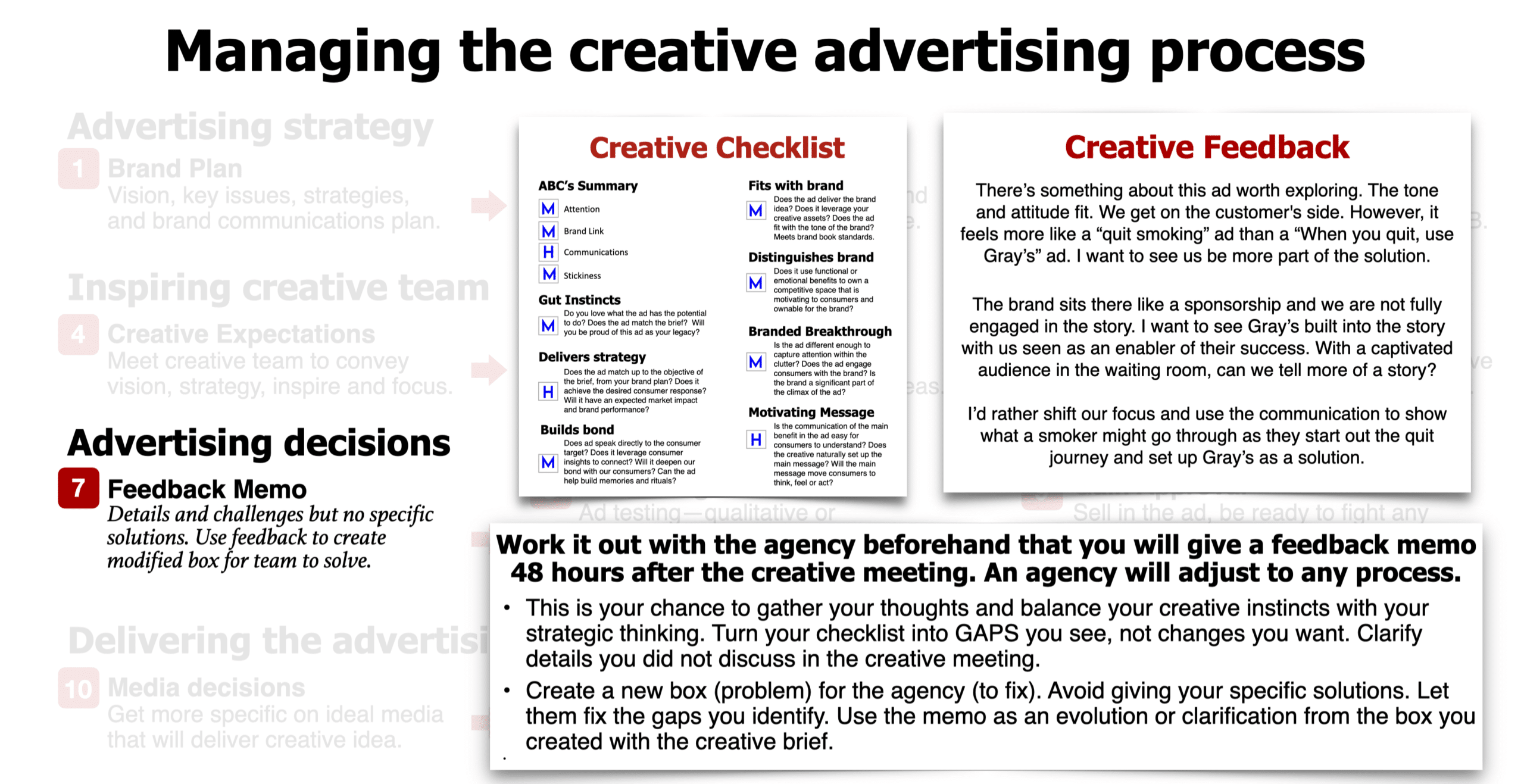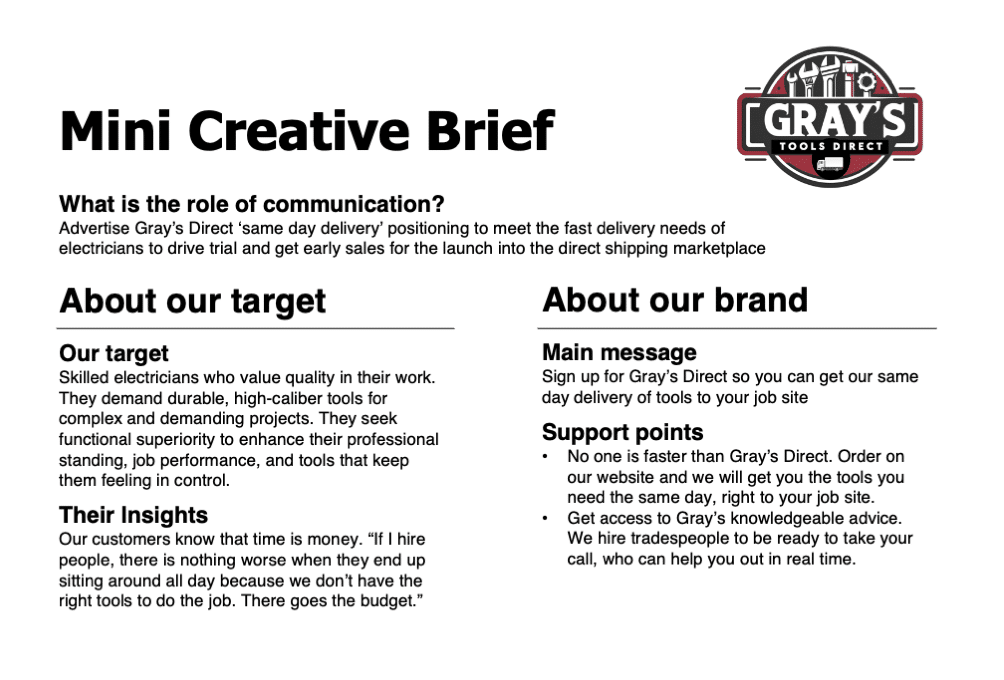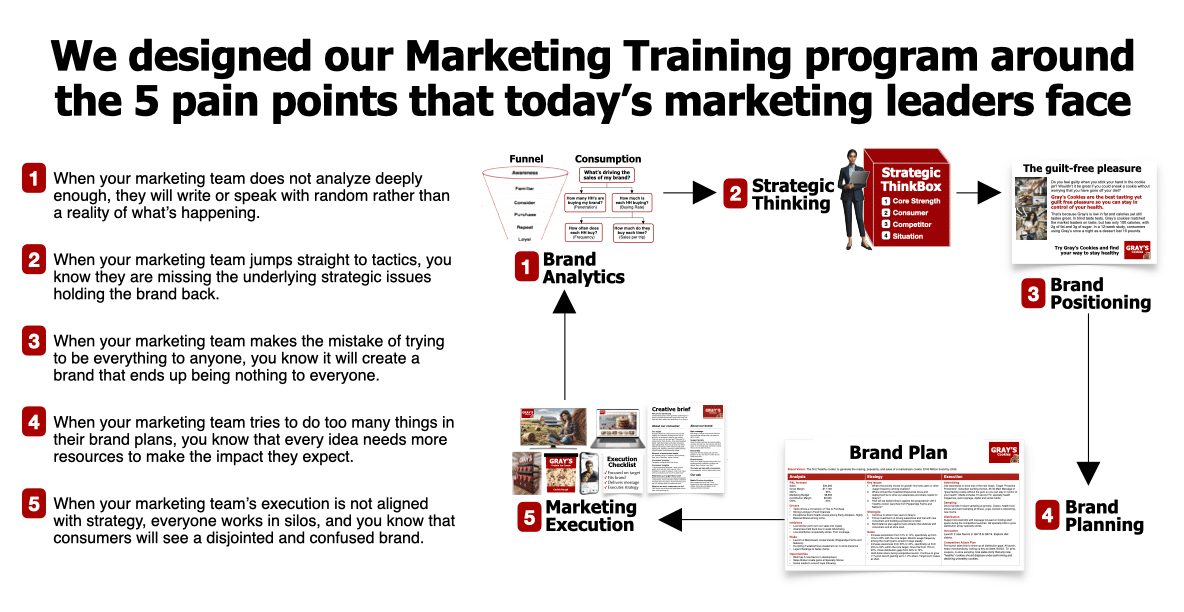The best brand leader plays the most crucial role in the creative advertising process. While they are not designed to be experts, they need to know enough to make advertising decisions, but never enough to do the work.
With the increasing speed of advertising, brand leaders have taken one step in and often find themselves embedded in the creative development. If you are now doing the work, then who is critiquing and who is deciding if the work is good enough and if it fits your strategy? Even using “internal agencies” creates a blind spot. Brand leaders need to step back and let the creativity unfold.
Creative advertising process - Table of Contents
The Creative advertising process
Brand leaders must be able to inspire, challenge, question, direct and decide, throughout the creative advertising process. If you knew that being a better advertising client would result in better work, would you do it? As we engage experts, the respect we show can either inspire greatness or crush their creative spirit. Being better at all elements of marketing is something you can learn through a combination of marketing training and on-the-job experience.
1. Brand Plan work
Establish a clear vision, purpose, values, key issues, and strategies to guide the brand communications strategy. The brand plan lays out the advertising strategy, investment, and desired response.
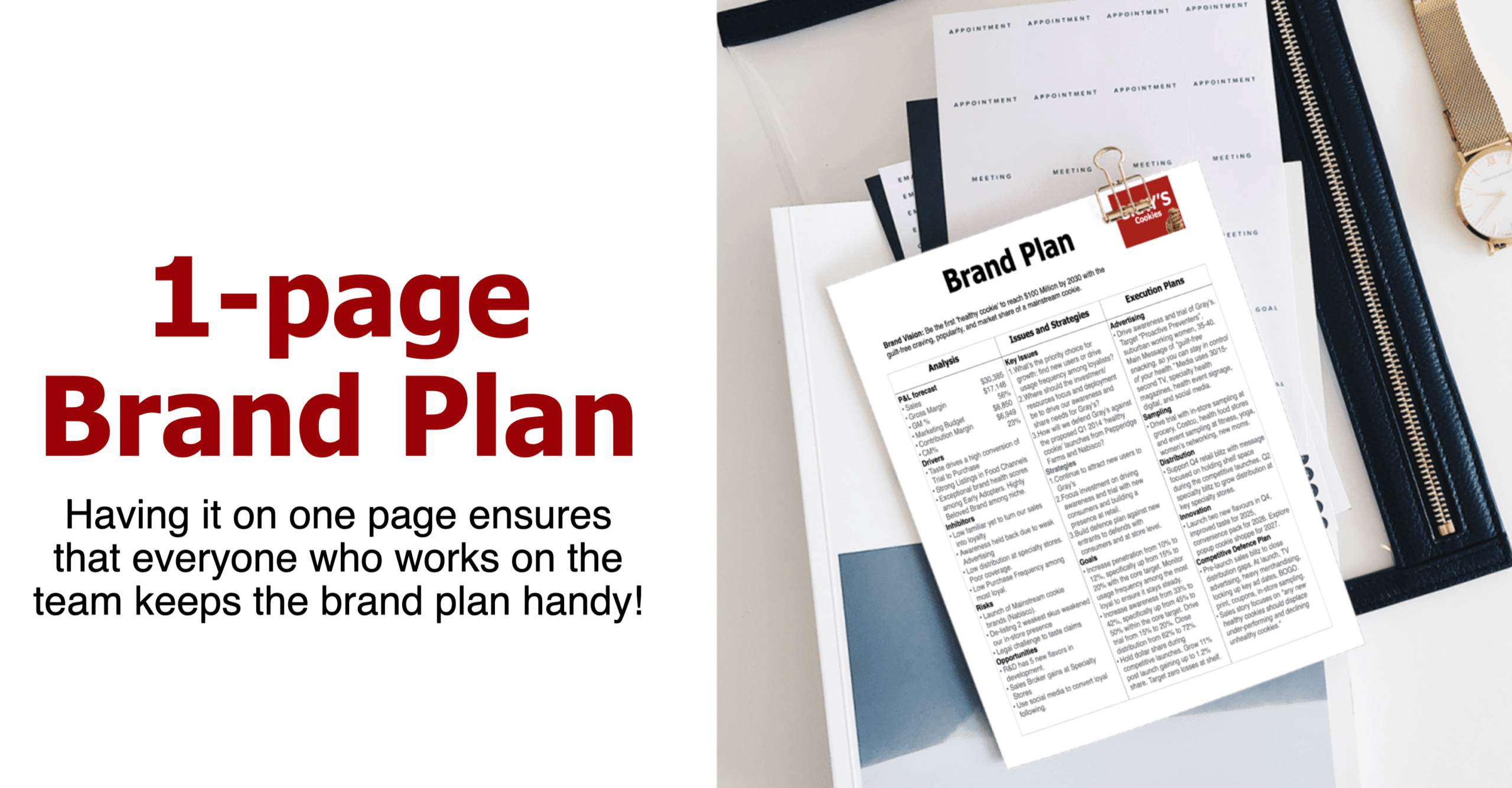
2. Strategy pre-work
The brand positioning and brand plan homework make it easier to write a great creative brief. Go deep on finding the consumer insights and consumer enemy, understand the brand positioning, and brand idea. In your brand plan, make sure you write a tightly focused brand communications plan. You should take a pen to the creative brief only after you have done your homework.
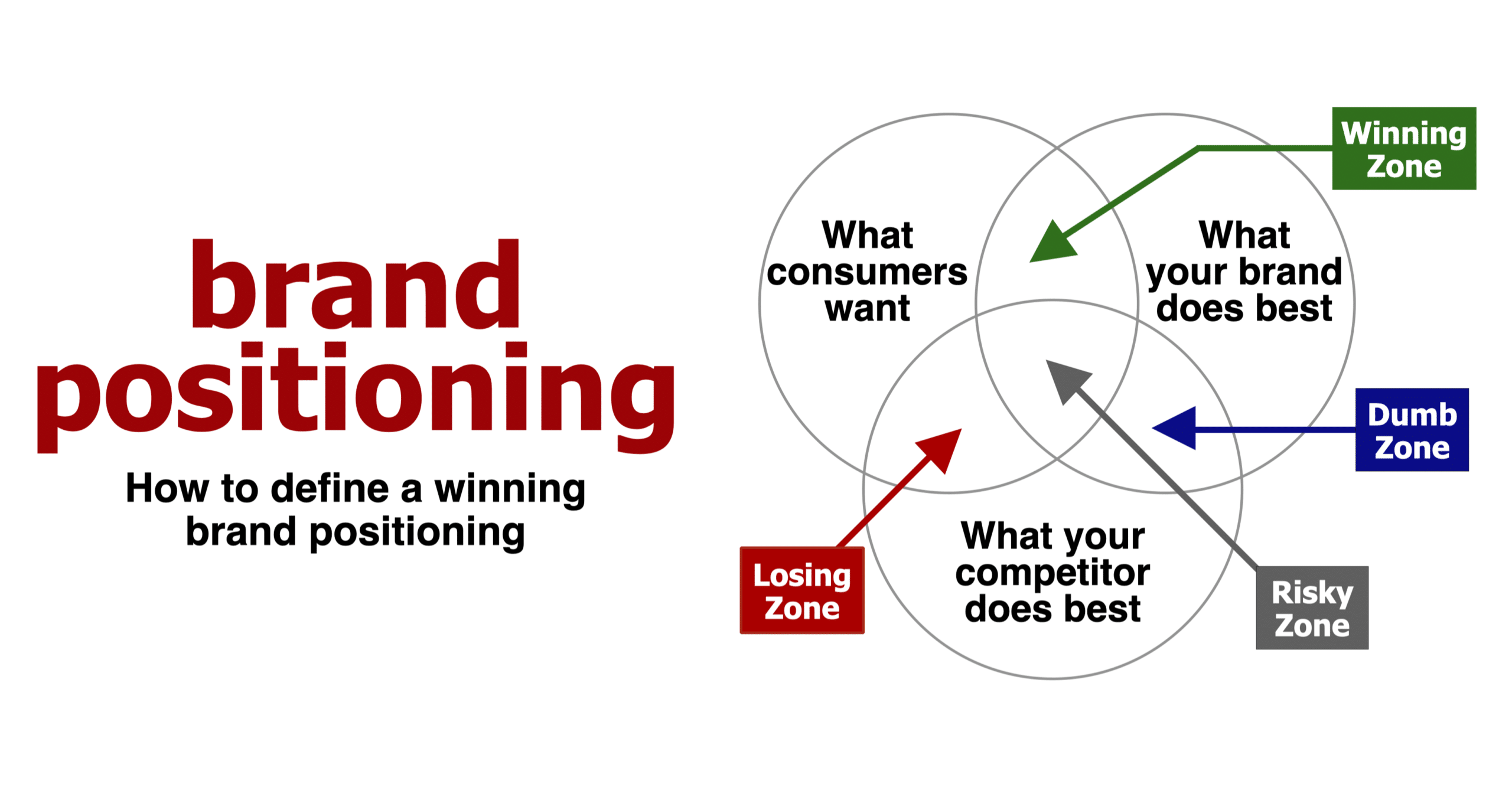
3. Focused creative brief
For the creative advertising process to work, you need a great brief. Sit with your agency and turn your homework into a creative brief. Debate every point. Keep it focused. Think of the brief like creating a strategic box the ad must play within. The brief must have one objective, a tightly defined target market with rich consumer insights, one crystal clear desired consumer response of whether you want consumers to see, think, feel or do, and one main message you know will motivate the consumer target to respond positively. For added confidence, lay out your brand positioning into a brand concept you can test and validate with consumers.
The role of the creative brief is the bridge between your strategic plan and any type of marketing execution. You should have a creative brief for any type of advertising, content marketing, logos, packaging design, websites, videos, or conferences. The creative brief distills everything you could possibly say into only those elements that matter. I will show you how to write a creative brief that inspires your agency.
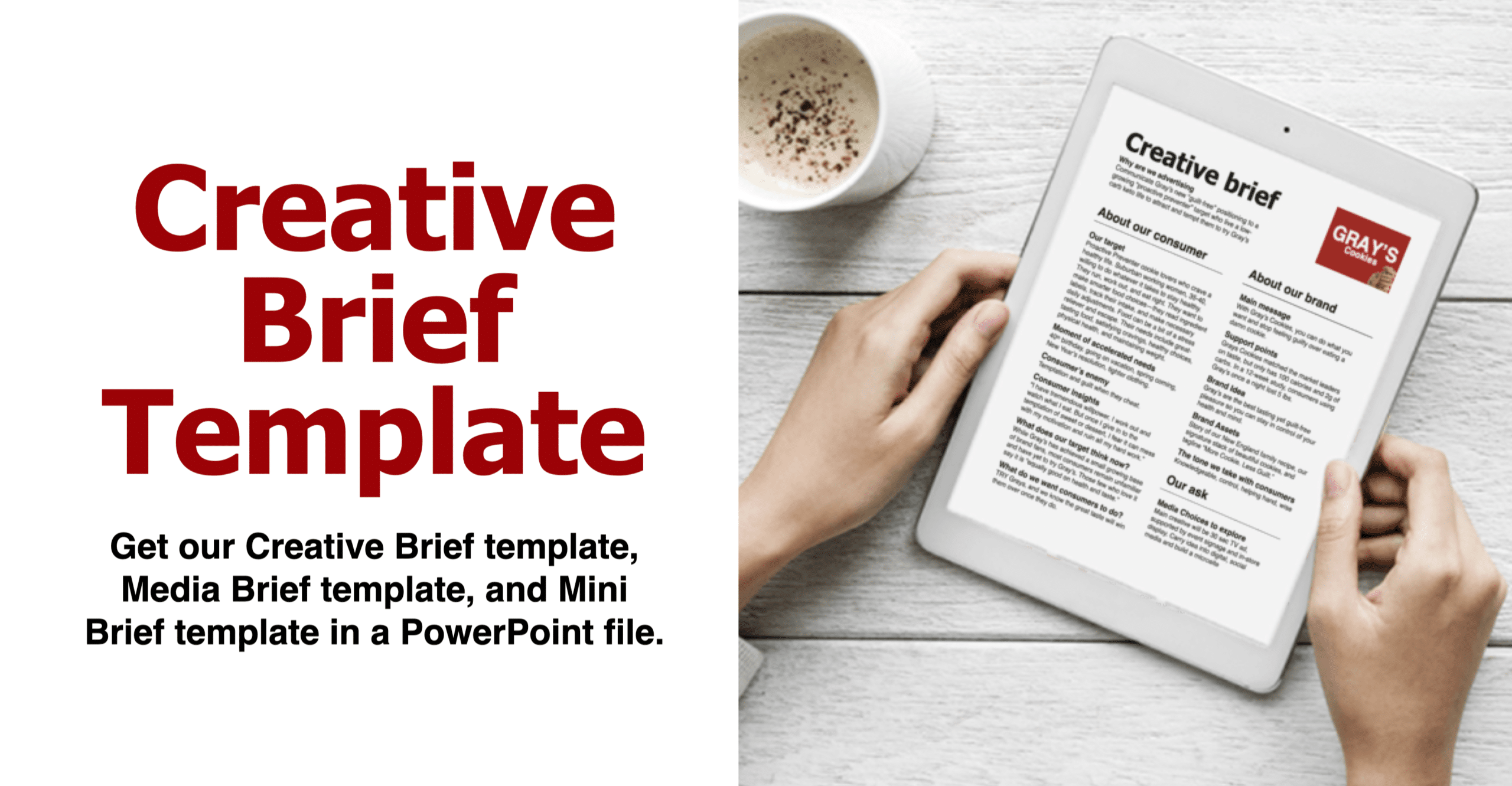
4. Creative expectations
Just after signing off on the brief, request an informal meeting with the creative team to help convey your vision, passion, strategy, and needs. An informal meeting is your first chance to inspire the team and begin the push for great work. It always surprises me that the first time most marketers meet their creative team is at the first creative meeting, which is usually three weeks after the creative team has started to work on your brand. That is crazy. It seems like an old-school way for the account team to control both the client and creative team, keeping them at arm’s length. I believe the best advertising comes from a highly personal relationship with your creative team.
5. Tissue session
When you have an entirely new campaign or you’re working on a high-risk campaign, you should ask to hold an informal tissue session where the creative team presents roughed out conceptual ideas, usually with hand-drawn visuals, with a simple headline and description of a story. This meeting is an excellent chance to get your hands dirty, understand where the team wants to go, either encouraging them to further explore some ideas or talk about how some ideas might not fit. You get to see behind the creative curtain. Do not abuse this privilege by adding your own ideas to the mix. Focus on big ideas and use the meeting to inspire and push for better.
6. Creative meeting
How you show up at the first creative meeting is crucial to the entire creative process. You are now on the “hot seat,” and you should feel the pressure. You are being judged as much as you think you are there to judge the work. Think of the first creative meeting like a first date. I have seen the relationship fizzle within seconds. Be on your best behavior. Stay positive and focus on big-picture decisions. Give direction and make decisions. Stop thinking that your job is to fix or change the ads you see. Do not get too wrapped up in small details, as there remains plenty of time to keep working on those details. Use your feedback to inspire the team.
To illustrate, click the image above to see what you should do at the creative meeting.
7. Feedback memo
Work it out with the agency ahead of time that you will give a feedback memo 48 hours after the creative meeting. This memo is your chance to gather your thoughts, balancing your creative instincts with your strategic thinking. The memo should clarify details you did not have a chance to talk about in the creative meeting. Where you are stuck, frame it as a problem, but avoid giving your specific solutions. Use the memo as a chance to create a new box for the creative team, an evolution from the box you created with the creative brief. Give them your problems, not your solutions. As the leader, this memo can be the make or break in the creative advertising process.
To illustrate, click the image above to see what you should do at the creative meeting.
8. Advertising testing
The use of ad testing depends on timing, budget, or degree of risk. Where you have a new major campaign, test the ideas you feel have the best chance to express your brand positioning, communicate the main benefit, break through the clutter, and motivate consumers to purchase. You can use qualitative focus group feedback to help confirm your instincts, or quantitative testing to replicate and predict how it may do in the market. I am a big believer that you should only use ad testing to confirm your pick, never to make your decision. Choose in your mind, what you think is the best ad. In case the results are close, go with your gut and select the one you chose before the test.
9. Gain approval
It is essential to keep your boss aware at every stage of the creative advertising process. Use your first meeting with your boss to state your vision for the project. Through each update meeting, keep your boss aligned with every decision. However, you always need to sell-in the ad! With every great ad I ever made, there were many resistors. However, with every possible bad ad on the table, I seemed to be the only resistor, who was trying not to make it. Own your vision, own your favorite ad, and find a way to make it happen.
10. Media Decisions
I always want to see the creative ideas expressed as video, billboard and long copy so I can see the possibilities. I might know the main media, but I want to see the creative ideas before I make any firm decisions. Once I know our direct, I can finalize the media plan based on the creative direction, main messages, and creative assets you will be building through the creative process.
To illustrate, click the image above to see what you should do at the creative meeting.
11. Production
The production process can be a very complicated element of the project. Remember, you have zero expertise in any production area. Do not even pretend you do. Your main role is to deliver as close to the original script that was approved while managing the tone to ensure it fits your brand. During the shoot, try to get more options than you need, just in case, as it may look different in the final edit room.
12. Post-production
At the end of the creative process, you move to the post-production stage, you become even less of an expert. Many clients decide to stay close to their agency account person. I believe you should talk directly with every expert (editors) you work with. A personal approach will enable you to get the most out of each of the experts. Your greatness happens through their greatness.
Creative Process for smaller projects
To illustrate, click on the visual to see details.
When things go fast, use our Mini Brief
The worst thing you can do is a phone call brief. There is no paper trail. You might go to 17 meetings between your phone call and the creative work. If you think you are saving time, what happens if your boss is confused and rejects the work? Now your short cut is biting you in the butt. Use our Mini Brief.
Marketing Careers
On a classic marketing team, there are four key levels:
- Assistant Brand Manager.
- Brand Manager.
- Marketing Director or Group Marketing Director.
- VP Marketing or CMO.
To illustrate, click to zoom in on the brand management career pathway.
At the Brand Manager level, it becomes about ownership and strategic thinking within your brand plan. Most Brand Managers are honestly a disaster with their first direct report, and get better around the fifth report.
When you get to the Marketing Director role, it becomes more about managing and leading than it does about thinking and doing. To be great, you need to motivate the greatness from your team and let your best players to do their absolute best.
And finally, at the CMO level, you must create your own vision, focus on your people to make them better and shine, drive the business results, and run the processes.
Beloved Brands Marketing Training
Our Beloved Brands Marketing Training program will make your team smarter.
If you are running a marketing team, you will always benefit from having a smarter team. When you invest in our marketing training program, you will help your team gain the marketing skills they need to succeed. As a result, you will see them make smarter decisions and produce exceptional work that drives business growth.
We’ll work with your team to help them learn more about the five core marketing skills: Strategic Thinking, Brand Positioning, Marketing Planning, Marketing Execution, and Brand Analytics. Most importantly, your marketers will learn new tools, concepts, and ideas to trigger new thinking. To help their skills, we get participants to take each tool on a test run. Then, we give feedback for them to keep improving.
To illustrate, click to zoom in on the brand management career pathway.
Take a look at our Marketing Skills assessment tool to see how you or your marketing team measure up.
For more information on our Beloved Brands Marketing Training programs, click below or email Graham Robertson at [email protected]


